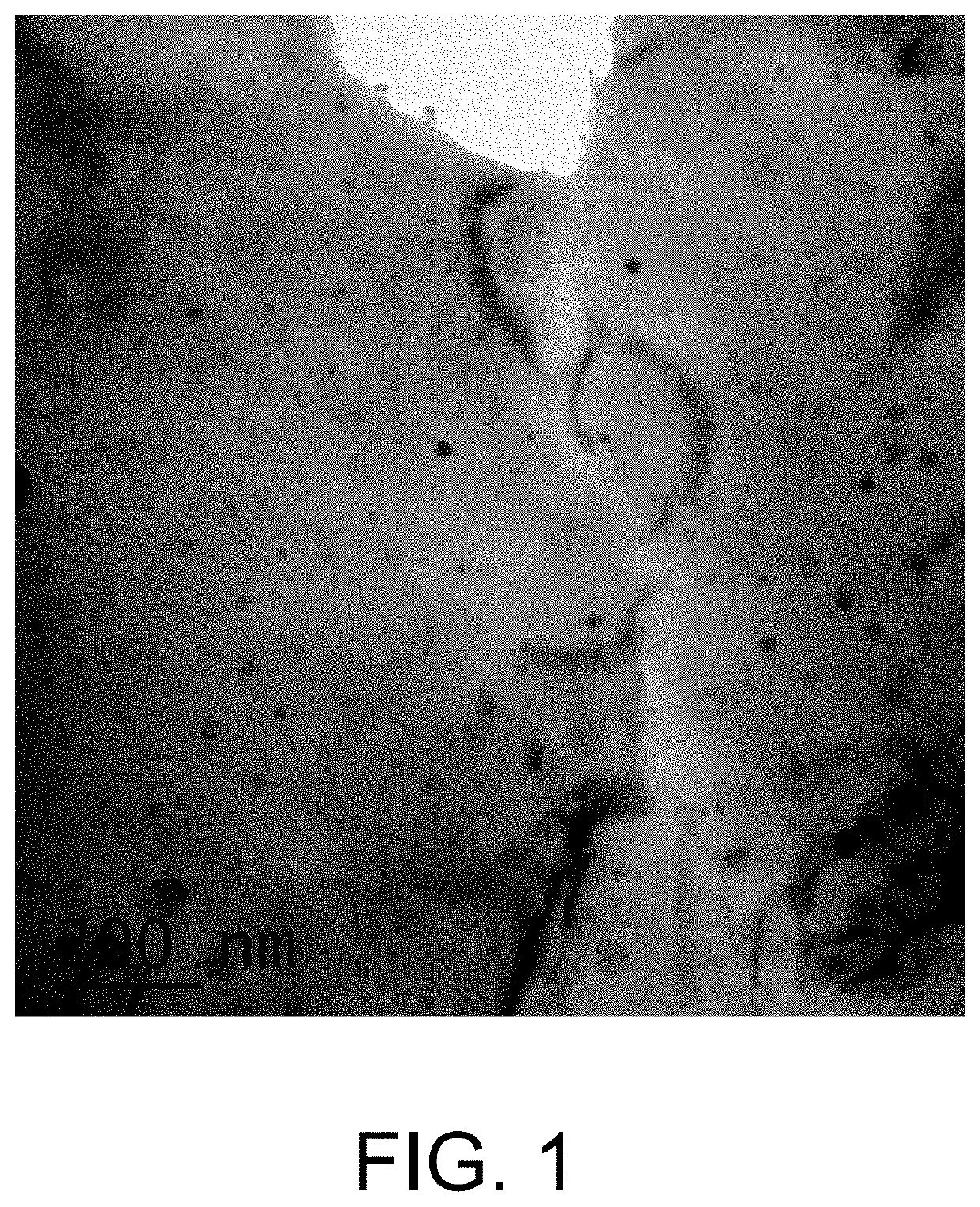Precipitation-strengthened copper alloy and application thereof
a technology of precipitation-strengthened copper and alloy, which is applied in the direction of metal/alloy conductors, conductive materials, and conductors, etc., can solve the problems of high price of sn, lack of comprehensive performance of brass, and complex mechanical and electrical wiring, etc., to improve the strength of alloy, reduce the conductivity of phosphor bronze, and improve the effect of cos
- Summary
- Abstract
- Description
- Claims
- Application Information
AI Technical Summary
Benefits of technology
Problems solved by technology
Method used
Image
Examples
Embodiment Construction
[0044]With reference to the embodiments, the invention will be further described in detail below in connection with the drawing.
[0045]Twenty embodiment alloys and two reference alloys (brass C28000 and tin phosphor bronze C51900) are selected, and the added elements are added to a melting furnace according to their respective contents, and the semi-continuous casting is carried out to obtain 170 mm×320 mm ingots at a casting temperature of 1150° C.
[0046]Other major preparation process parameters are:
[0047]Hot rolling: heating to 780° C., holding the temperature for 5 hours, and hot rolling to 16.5 mm;
[0048]Face milling: milling upper and lower faces to 15 mm;
[0049]Primary cold rolling: cold rolling to 2 mm from 15 mm;
[0050]Primary aging: aging at 550° C., and holding the temperature for 6 hours;
[0051]Secondary cold rolling: cold rolling to 0.35 mm from 2 mm;
[0052]Secondary aging: aging at 380° C., and holding the temperature for 8 hours;
[0053]Third cold rolling: cold rolling to 0.2 ...
PUM
| Property | Measurement | Unit |
|---|---|---|
| particle diameter | aaaaa | aaaaa |
| yield strength | aaaaa | aaaaa |
| tensile strength | aaaaa | aaaaa |
Abstract
Description
Claims
Application Information
 Login to View More
Login to View More - R&D
- Intellectual Property
- Life Sciences
- Materials
- Tech Scout
- Unparalleled Data Quality
- Higher Quality Content
- 60% Fewer Hallucinations
Browse by: Latest US Patents, China's latest patents, Technical Efficacy Thesaurus, Application Domain, Technology Topic, Popular Technical Reports.
© 2025 PatSnap. All rights reserved.Legal|Privacy policy|Modern Slavery Act Transparency Statement|Sitemap|About US| Contact US: help@patsnap.com

